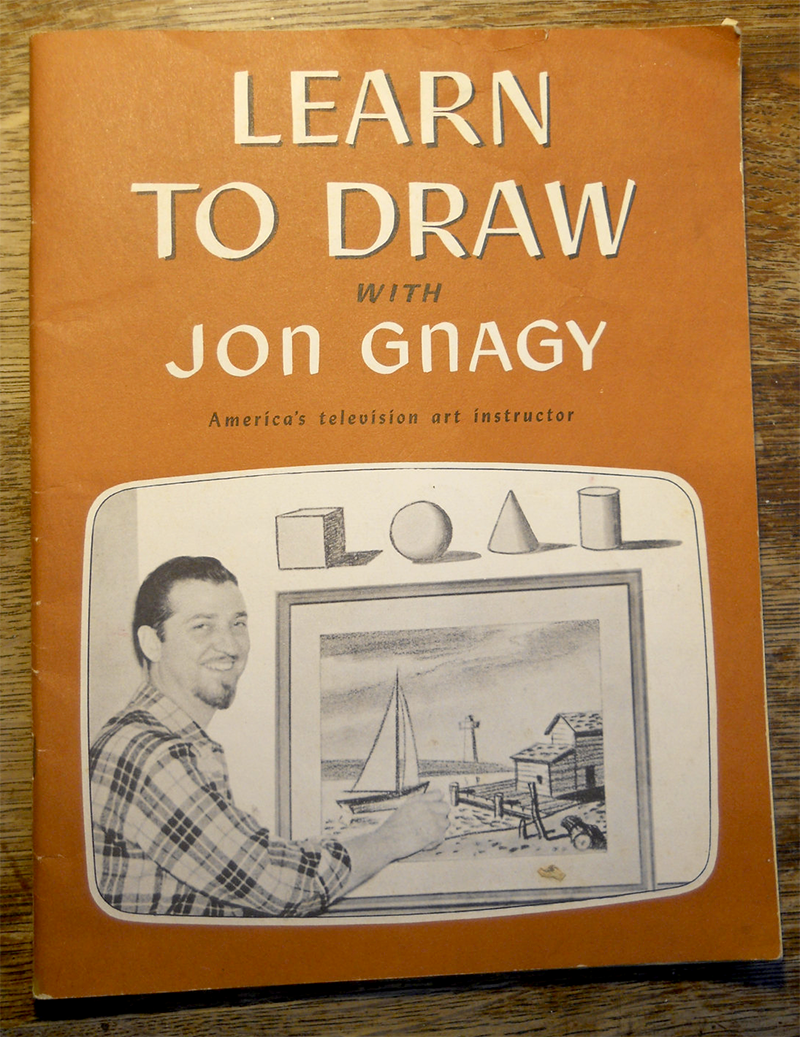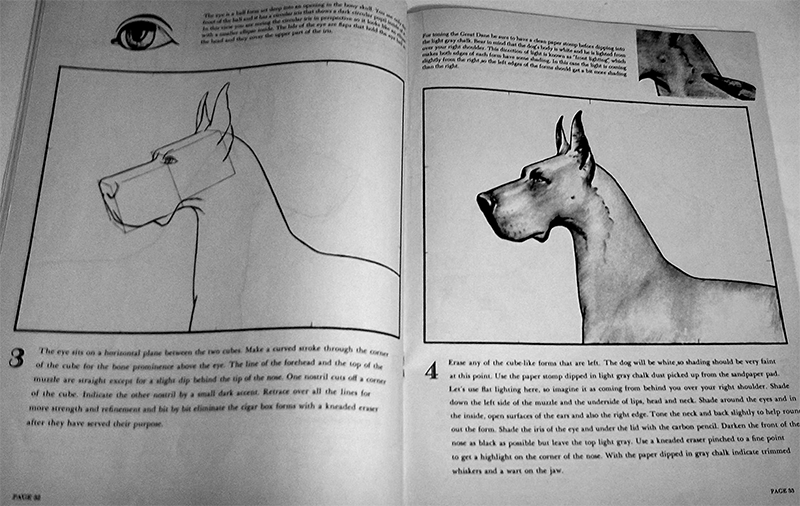
In the early 1960s, St. Theresa’s, my grade school alma mater in Garfield Heights, Ohio, had no art program. The official reason was that the diocese’s spartan budgets precluded activities deemed “nonessential.” I suspected the severe and terrifying Ursuline nuns that ran the place probably felt uncomfortable teaching subjects without clear right and wrong answers. Yes, a few more hours of catechism every week would do our immortal souls more good. Besides, the chaos of paint, paper, and paste was more typical of the moral slackness and outright nihilism St. Theresa’s associated with public school kids, who got to wear whatever they wanted to school and probably had alcoholic parents to boot.
My only clue that I had nascent art ability came from my first-grade teacher, a popular “lay instructor” named Mrs. Kinola. She was impressed with some drawings I had done of classroom objects as part of a spelling exercise and sent them home to my parents with a note on the order of “Mike looks like he might be a real artist!”
But what did this mean? As far as I knew, there were no artists in Garfield Heights. Most of the adults I knew were either housewives or men who did things involving large machines.
Like many of my friends, I liked to get up early on Saturday mornings, say five thirty or so. The shows on before the cartoons had an eerily tragic aspect. Even then I could sense that those time slots were some sort of neglected holding cells for unwanted programs.
That’s where I discovered Jon Gnagy. Although I had never seen an artist, I know immediately that Jon Gnagy was one. There he was on television, standing in front of an easel, wearing a coarse flannel shirt and sporting a goatee. This last detail seemed especially telling, as I had never seen a living person with facial hair in my life; beards were for people like Abraham Lincoln or Jesus. Jon Gnagy was, like them, definitely not of Garfield Heights.
On each episode of his show, Learn to Draw with Jon Gnagy, he would demonstrate, step by step, how to make a drawing. The viewer was meant to follow along at home. Electrified by my discovery of this potential mentor, I joined in enthusiastically. I still remember his authority, lack of condescension, and patience as he showed how a blank piece of paper could be methodically transformed into a still life, landscape, or portrait. I vowed to reorganize my schedule around this program.
After watching in rapture for several weeks, I began to make some realizations. First, the most striking quality of Gnagy’s work was its realism, a characteristic all the more miraculous because the drawings were created (more or less) right before your eyes. Circles became ripe apples. Squares, cozy little farmhouses. But it sometimes happened too quickly to follow; the most dramatic transformations seemed to occur during the commercials.
Second, art appeared to require specialized tools. Gnagy referred regularly to special pencils and chalks, not to mention something called a “kneaded” eraser and a baffling item called a “paper stomp.” I gamely played along at home with my No. 2 Mongol and shirt cardboards, but it soon became obvious that I was in over my head. The solution was a boxed kit advertised on each episode that contained all the necessary implements, as well as an instruction book. After much campaigning by me and, no doubt, much research by my parents, I got the official Learn to Draw kit for Christmas.
The tools it contained were wonderful, but the revelation was the instruction book. I carried my copy everywhere for two years, studying every detail with a fervor that would have impressed the nuns at St. Theresa’s. With the book I was no longer bound to the television show, the schedule of which had gotten more and more irregular. Some weeks it wasn’t on at all. No matter: I had the book. I attempted each drawing at least once (including the impossible Harlequin Dane, “the aristocrat of dogs.”) My favorites, like Whistle Stop and RFP America, were repeated over and over until I knew them by heart, like a piano student with “Moonlight Sonata.”
I recently discovered a copy of Learn to Draw with Jon Gnagy in a New York art supply store. Although it appeared to be a recently printed edition, it was completely — I guarantee, completely — unchanged from the book I had dog-eared so relentlessly back in Garfield Heights. As I turned the pages, I grew more and more dizzy with déjà vu; the effect each image had on me far exceeded anything the smell of madeleines would have had on Marcel Proust.
The seven drawings were particularly potent. Seeing Covered Bridge, for instance (“a scene that features depth by use of ‘aerial perspective’”), I realized that single image constituted my total experience with that particular subject. In other words, although I could have sworn otherwise, I have never seen a covered bridge in real life. Other designers of a certain age have similar memories. “Did you have Jon Gnagy when you were little?” I will ask. A positive response invariably takes the form of a dreamy, unfocused look, and a murmured, “Oh, God, that drawing of the Great Dane.”

The one thing that impresses me most about Jon Gnagy now, though, isn’t an image or a drawing. It’s a particular attitude about art, specifically the idea that it could be demystified. I expected Gnagy’s book, some many years later, to be quaint and comical. Instead, it seems sincere and heartfelt. His goal was “to help you awaken that hidden talent so you may find happiness and genuine fun in the world around you through the hobby of drawing and painting.”
Perhaps, in the end, Jon Gnagy drove me out of the world of fine art and into graphic design. I eventually became a good artist by high-school standards, which basically meant I could draw realistically. Gnagy knew all along that this is what we all secretly want to do, and so he taught drawing in terms of design: a circle that had to become a pumpkin was just another problem to be solved. And there was a secret to the process—nothing mysterious—and it was promised on page three of the instruction book: “ON THE NEXT PAGE IS THE SECRET OF REALISTIC DRAWING.”
And sure enough, turn the page, and there it was: “SHADING IS THE SECRET OF REALISTIC DRAWING.”
By the time I got to college, I could shade the hell out of anything, but realistic drawing was considered a pretty cheap commodity. What was valued in the fine arts department seemed to be self-expression, or individuality, or passion, or something mysterious like that. Graphic design, on the other hand, was taught in the tradition of Jon Gnagy: methodical, straightforward, and, to quote the man himself, “genuine fun.” So I became a graphic designer. And to my fine-artist friends, especially the most eccentric and broodingly tormented, I ask, What’s the mystery? It’s all on page four.
This essay is reprinted from Now You See It and Other Essays on Design, available November 7, 2017, from Princeton Architectural Press, with permission of the author and publisher.

